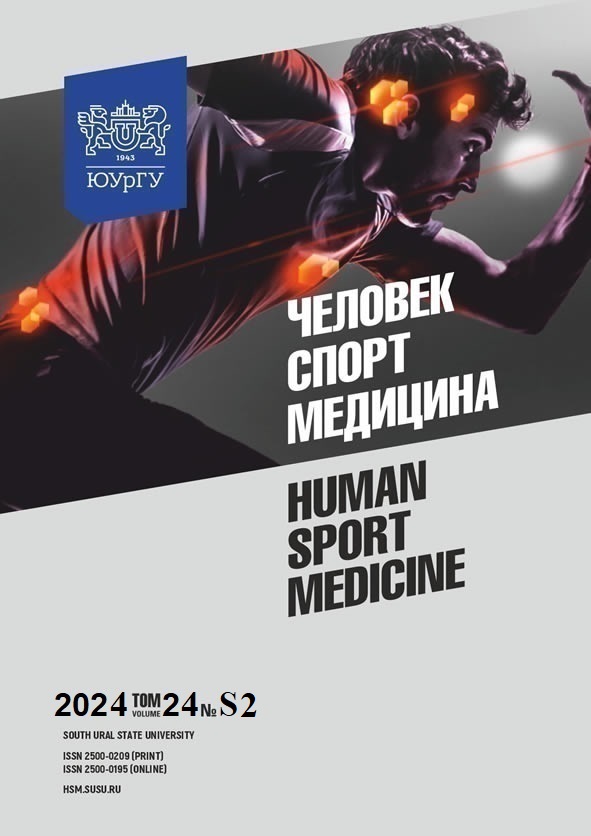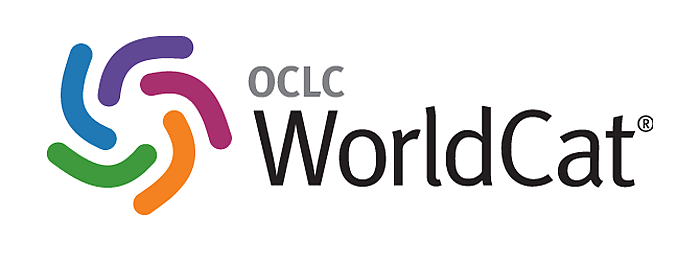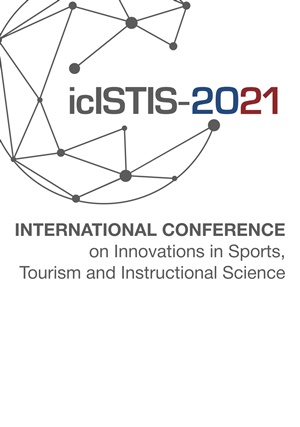ВЛИЯНИЕ ТРАНСКРАНИАЛЬНОЙ ЭЛЕКТРОСТИМУЛЯЦИИ ПОСТОЯННЫМ ТОКОМ НА ПСИХОФИЗИОЛОГИЧЕСКИЙ СТАТУС В СМЕШАННОМ БОЕВОМ ЕДИНОБОРСТВЕ
Аннотация
Цель: изучить влияние курсового воздействия транскраниальной электростимуляции постоянным током (ТЭСпт) дорсолатеральной префронтальной коры на психофизиологический статус спортсменов смешанного боевого единоборства (СБЕ) в предсоревновательном периоде подготовки. Материалы и методы исследования. В исследовании прияли участие 28 профессиональных спортсменов СБЕ – мужчин в возрасте 23 ± 3,2 года, имеющих не менее 6 проведенных профессиональных поединков. Участники были разделены на контрольную (КГ) и 3 экспериментальные группы (ЭГ1, ЭГ2, ЭГ3). В ходе исследования участники находились в предсоревновательном периоде подготовки к профессиональным поединкам и тренировались 2 раза в день в специально разработанном тренировочном микроцикле, направленном на совершенствование технико-тактических действий. В КГ не применялось никаких дополнительных воздействий. В экспериментальных группах применялся курс ТЭСпт. Группы различались по времени воздействия однократного сеанса ТЭСпт: в ЭГ1 – 10 мин, в ЭГ2 – 20 мин, в ЭГ3 – 30 мин в течение 8 дней. Результаты. Выявлено улучшение психофизиологических параметров при курсовом применении ТЭСпт. Однако выраженность эффектов зависит от протокола стимуляции. Наиболее значимый эффект наблюдался в ЭГ3, менее выраженный – в ЭГ2. Эффекты в КГ и ЭГ статистически не различались и характеризовались снижением результативности в тестах «Кольца Ландольта», объем зрительного восприятия, простой и сложной сенсомоторной реакции в условиях распределённого внимания. Заключение. Продемонстрирована эффективность курсового влияния ТЭСпт на психофизиологический статус профессиональных спортсменов СБЕ в предсоревновательном периоде подготовки. Изучение физиологических механизмов такого результата должно быть изучено в будущем, однако на данный момент очевидно, что 30-минутный протокол оказывает более выраженное действие на улучшение и сохранение психофизиологического статуса спортсменов СБЕ в предсоревновательном периоде подготовки.
Литература
2. Коваленко Е.В., Ляпин В.А. Сравнительный анализ отдельных психофизиологических реакций в соревновательной деятельности у спортсменов, занимающихся различными видами восточных единоборств // Современные проблемы науки и образования. 2013. № 5. С. 483–490. [Kovalenko E.V., Lyapin V.A. [Comparative Analysis of Individual Psychophysiological Reactions in Competitive Activity Among Athletes Engaged in Various Types of Martial Arts]. Sovremennyye problemy nauki i obrazovaniya [Modern Problems of Science and Education], 2013, no. 5, pp. 483–490. (in Russ.)]
3. Abedanzadeh R., Alboghebish S., Barati P. The Effect of Transcranial Direct Current Stimulation of Dorsolateral Prefrontal Cortex on Performing a Sequential Dual Task: a Randomized Experimental Study. Psicologia: Reflexão e Crítica, 2021, vol. 34, no. 1, p. 30. DOI: 10.1186/s41155-021-00195-8
4. Antal A., Alekseichuk I., Bikson M. et al. Low Intensity Transcranial Electric Stimulation: Safety, Ethical, Legal Regulatory and Application Guidelines. Clinical Neurophysiology, 2017, vol. 128, no. 9, pp. 1774–1809. DOI: 10.1016/j.clinph.2017.06.001
5. Arnsten A.F., Jin L.E. Molecular Influences on Working Memory Circuits in Dorsolateral Prefrontal Cortex. Progress in Molecular Biology and Translational Science, 2014, no. 122, pp. 211–231. DOI: 10.1016/B978-0-12-420170-5.00008-8
6. Chen M.A., Cheesman D.J. Mental Toughness of Mixed Martial Arts Athletes at Different Levels of Competition. Perceptual and Motor Skills, 2013, vol. 116, no. 3, pp. 905–917. DOI: 10.2466/29.30.PMS.116.3.905-917
7. Cooper S., Lochbaum M. A Systematic Review of the Sport Psychology Mixed Martial Arts Literature: Replication and Extension. European Journal of Investigation in Health, Psychology and Education, 2022, vol. 12, no. 2, pp. 77–90. DOI: 10.3390/ejihpe12020007
8. Faro H.K., Fortes L.S., Machado D.G. Dynamics of Cognitive Performance at Rest and After Exhaustive Exercise in Top-three World-ranked Mixed Martial Arts Athletes: a Series of Case Studies. The Journal of Sports Medicine and Physical Fitness, 2020, vol. 60, no. 4, pp. 664–668. DOI: 10.23736/S0022-4707.19.10207-1
9. Gold J., Ciorciari J. Impacts of Transcranial Direct Current Stimulation on the Action Observation Network and Sports Anticipation Task. Journal of Sport and Exercise Psychology, 2021, vol. 43, no. 4, pp. 310–322. DOI: 10.1123/jsep.2020-0109
10. Jung J., Salazar Fajardo J.C., Kim S. et al. Effect of tDCS Combined With Physical Training on Physical Performance in a Healthy Population. Research Quarterly for Exercise and Sport, 2023, vol. 10, pp. 1–8. DOI: 10.1080/02701367.2023.2166894
11. Katić R., Blazević S., Zagorac N. The Impact of Cognitive Processors and Conative Regulators on Specific Motor Abilities in Boxers. Collegium Antropologicum, 2006, vol. 30, no. 4, pp. 829–836.
12. Knight H.C., Smith D.T., Ellison A. The Role of the Left Dorsolateral Prefrontal Cortex in Attentional Bias. Neuropsychologia, 2020, no. 148, 107631. DOI: 10.1016/j.neuropsychologia.2020.107631
13. Miarka B., Vecchio F.B., Camey S., Amtmann J.A. Comparisons: Technical-Tactical and Time-Motion Analysis of Mixed Martial Arts by Outcomes. The Journal of Strength & Conditioning Research, 2016, vol. 30, no. 7, pp. 1975–1984. DOI: 10.1519/JSC.0000000000001287
14. Moreira A., Machado D.G.D.S., Bikson M. et al. Effect of Transcranial Direct Current Stimulation on Professional Female Soccer Players' Recovery Following Official Matches. Perceptual and Motor Skills, 2021, vol. 128, no. 4, pp. 1504–1529. DOI: 10.1177/00315125211021239
15. Panikratova Y.R., Vlasova R.M., Akhutina T.V. et al. Functional Connectivity of the Dorsolateral Prefrontal Cortex Contributes to Different Components of Executive Functions. International Journal of Psychophysiology, 2020, no. 151, pp. 70–79. DOI: 10.1016/j.ijpsycho.2020.02.013
16. Panitz M., Deserno L., Schlagenhauf F. Anodal tDCS Over the Medial Prefrontal Cortex Enhances Behavioral Adaptation After Punishments During Reversal Learning Through Increased Updating of Unchosen Choice Options. Cerebral Cortex Communications, 2022, vol. 3, no. 1, tgac006. DOI: 10.1093/texcom/tgac006
17. Qin S., Hermans E.J., van Marle H.J. et al. Acute Psychological Stress Reduces Working Memory-related Activity in the Dorsolateral Prefrontal Cortex. Biological Psychiatry, 2009, vol. 66, no. 1, pp. 25–32. DOI: 10.1016/j.biopsych.2009.03.006
18. Thomas F., Steinberg F., Pixa N.H. et al. Prefrontal High Definition Cathodal tDCS Modulates Executive Functions Only when Coupled with Moderate Aerobic Exercise in Healthy Persons. Scientific Reports, 2021, vol. 11, no. 1, 8457. DOI: 10.1038/s41598-021-87914-4
19. Vignaud P., Adam O., Palm U. et al. Can a Single Session of Noninvasive Brain Stimulation Applied Over the Prefrontal Cortex Prevent Stress-induced Cortisol Release? Progress in Neuro-Psychopharmacology & Biological Psychiatry, 2023, vol. 8, no. 121, 110667. DOI: 10.1016/j.pnpbp.2022.110667
20. Zhu F.F., Yeung A.Y., Poolton J.M. et al. Cathodal Transcranial Direct Current Stimulation Over Left Dorsolateral Prefrontal Cortex Area Promotes Implicit Motor Learning in a Golf Putting Task. Brain Stimulation, 2015, vol. 8, no. 4, pp. 784–796. DOI: 10.1016/j.brs.2015.02.005
References
1. Габелкова, О.Е. Проявление факторов стресса в разных видах спорта // Педагогика, психология и медико-биологические проблемы физического воспитания и спорта. 2009. № 1. С. 38–42. [Gabelkova O.E. [Manifestation of Stress Factors in Different Types of Sports]. Pedagogika, psikhologiya i mediko-biologicheskiye problemy fizicheskogo vospitaniya i sporta [Pedagogy, Psychology and Medical and Biological Problems of Physical Education and Sports], 2009, no. 1, pp. 38–42. (in Russ.)]2. Коваленко Е.В., Ляпин В.А. Сравнительный анализ отдельных психофизиологических реакций в соревновательной деятельности у спортсменов, занимающихся различными видами восточных единоборств // Современные проблемы науки и образования. 2013. № 5. С. 483–490. [Kovalenko E.V., Lyapin V.A. [Comparative Analysis of Individual Psychophysiological Reactions in Competitive Activity Among Athletes Engaged in Various Types of Martial Arts]. Sovremennyye problemy nauki i obrazovaniya [Modern Problems of Science and Education], 2013, no. 5, pp. 483–490. (in Russ.)]
3. Abedanzadeh R., Alboghebish S., Barati P. The Effect of Transcranial Direct Current Stimulation of Dorsolateral Prefrontal Cortex on Performing a Sequential Dual Task: a Randomized Experimental Study. Psicologia: Reflexão e Crítica, 2021, vol. 34, no. 1, p. 30. DOI: 10.1186/s41155-021-00195-8
4. Antal A., Alekseichuk I., Bikson M. et al. Low Intensity Transcranial Electric Stimulation: Safety, Ethical, Legal Regulatory and Application Guidelines. Clinical Neurophysiology, 2017, vol. 128, no. 9, pp. 1774–1809. DOI: 10.1016/j.clinph.2017.06.001
5. Arnsten A.F., Jin L.E. Molecular Influences on Working Memory Circuits in Dorsolateral Prefrontal Cortex. Progress in Molecular Biology and Translational Science, 2014, no. 122, pp. 211–231. DOI: 10.1016/B978-0-12-420170-5.00008-8
6. Chen M.A., Cheesman D.J. Mental Toughness of Mixed Martial Arts Athletes at Different Levels of Competition. Perceptual and Motor Skills, 2013, vol. 116, no. 3, pp. 905–917. DOI: 10.2466/29.30.PMS.116.3.905-917
7. Cooper S., Lochbaum M. A Systematic Review of the Sport Psychology Mixed Martial Arts Literature: Replication and Extension. European Journal of Investigation in Health, Psychology and Education, 2022, vol. 12, no. 2, pp. 77–90. DOI: 10.3390/ejihpe12020007
8. Faro H.K., Fortes L.S., Machado D.G. Dynamics of Cognitive Performance at Rest and After Exhaustive Exercise in Top-three World-ranked Mixed Martial Arts Athletes: a Series of Case Studies. The Journal of Sports Medicine and Physical Fitness, 2020, vol. 60, no. 4, pp. 664–668. DOI: 10.23736/S0022-4707.19.10207-1
9. Gold J., Ciorciari J. Impacts of Transcranial Direct Current Stimulation on the Action Observation Network and Sports Anticipation Task. Journal of Sport and Exercise Psychology, 2021, vol. 43, no. 4, pp. 310–322. DOI: 10.1123/jsep.2020-0109
10. Jung J., Salazar Fajardo J.C., Kim S. et al. Effect of tDCS Combined With Physical Training on Physical Performance in a Healthy Population. Research Quarterly for Exercise and Sport, 2023, vol. 10, pp. 1–8. DOI: 10.1080/02701367.2023.2166894
11. Katić R., Blazević S., Zagorac N. The Impact of Cognitive Processors and Conative Regulators on Specific Motor Abilities in Boxers. Collegium Antropologicum, 2006, vol. 30, no. 4, pp. 829–836.
12. Knight H.C., Smith D.T., Ellison A. The Role of the Left Dorsolateral Prefrontal Cortex in Attentional Bias. Neuropsychologia, 2020, no. 148, 107631. DOI: 10.1016/j.neuropsychologia.2020.107631
13. Miarka B., Vecchio F.B., Camey S., Amtmann J.A. Comparisons: Technical-Tactical and Time-Motion Analysis of Mixed Martial Arts by Outcomes. The Journal of Strength & Conditioning Research, 2016, vol. 30, no. 7, pp. 1975–1984. DOI: 10.1519/JSC.0000000000001287
14. Moreira A., Machado D.G.D.S., Bikson M. et al. Effect of Transcranial Direct Current Stimulation on Professional Female Soccer Players' Recovery Following Official Matches. Perceptual and Motor Skills, 2021, vol. 128, no. 4, pp. 1504–1529. DOI: 10.1177/00315125211021239
15. Panikratova Y.R., Vlasova R.M., Akhutina T.V. et al. Functional Connectivity of the Dorsolateral Prefrontal Cortex Contributes to Different Components of Executive Functions. International Journal of Psychophysiology, 2020, no. 151, pp. 70–79. DOI: 10.1016/j.ijpsycho.2020.02.013
16. Panitz M., Deserno L., Schlagenhauf F. Anodal tDCS Over the Medial Prefrontal Cortex Enhances Behavioral Adaptation After Punishments During Reversal Learning Through Increased Updating of Unchosen Choice Options. Cerebral Cortex Communications, 2022, vol. 3, no. 1, tgac006. DOI: 10.1093/texcom/tgac006
17. Qin S., Hermans E.J., van Marle H.J. et al. Acute Psychological Stress Reduces Working Memory-related Activity in the Dorsolateral Prefrontal Cortex. Biological Psychiatry, 2009, vol. 66, no. 1, pp. 25–32. DOI: 10.1016/j.biopsych.2009.03.006
18. Thomas F., Steinberg F., Pixa N.H. et al. Prefrontal High Definition Cathodal tDCS Modulates Executive Functions Only when Coupled with Moderate Aerobic Exercise in Healthy Persons. Scientific Reports, 2021, vol. 11, no. 1, 8457. DOI: 10.1038/s41598-021-87914-4
19. Vignaud P., Adam O., Palm U. et al. Can a Single Session of Noninvasive Brain Stimulation Applied Over the Prefrontal Cortex Prevent Stress-induced Cortisol Release? Progress in Neuro-Psychopharmacology & Biological Psychiatry, 2023, vol. 8, no. 121, 110667. DOI: 10.1016/j.pnpbp.2022.110667
20. Zhu F.F., Yeung A.Y., Poolton J.M. et al. Cathodal Transcranial Direct Current Stimulation Over Left Dorsolateral Prefrontal Cortex Area Promotes Implicit Motor Learning in a Golf Putting Task. Brain Stimulation, 2015, vol. 8, no. 4, pp. 784–796. DOI: 10.1016/j.brs.2015.02.005
Copyright (c) 2025 Человек. Спорт. Медицина

Это произведение доступно по лицензии Creative Commons «Attribution-NonCommercial-NoDerivatives» («Атрибуция — Некоммерческое использование — Без производных произведений») 4.0 Всемирная.















